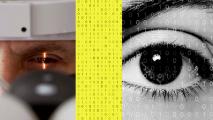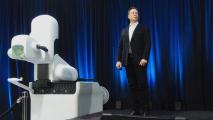Radioactive bone cement may help treat spinal tumors
Researchers at the University of California, Irvine believe they have a safer, better way to treat spinal tumors — and it’s showing efficacy in animal and computer models: radioactive bone cement, injected right into the spine.
“You can have this procedure and be done with it,” UCI professor of radiological science Joyce Keyak said in a release. “And you can do it when tumors are smaller to prevent further bone and spinal cord damage, while limiting the pain and side effects that patients often feel.”
The spine is the most likely site of bone metastasis; 3-5% of all cancer patients will have their cancer spread to the spine, most commonly in those with breast, prostate, or lung cancer.
The technique, which Keyak presented at the Orthopaedic Research Society’s annual meeting — held virtually this past February — would be a form of brachytherapy.
Also called internal radiation, brachytherapy involves inserting radioactive material inside the body to treat tumors, as opposed to blasting the site with radiation externally.
According to the Mayo Clinic, brachytherapy gets higher doses of radiation to specific targets, which potentially means less side effects and shorter treatment time.
Mixing brachytherapy with bone cement may also provide some added benefits in the case of spinal tumors.
Because the bone cement is injected into, well, the bone, the radiation it’s laced with would not be impeded by the spinal cord — or possibly damage it.
Beam radiation therapy can also weaken bones, the researchers write — the same bones already under assault by the tumor. The bone cement would instead bolster the spine, while administering therapy.
The bone cement bolsters the spine, while administering radiation therapy.
The researchers used animal and computational models to assess the therapy’s safety and tolerability, both from injecting the bone cement per se and the chance of radiation leaking out into the body. A post-injection follow up 17 weeks later found no radioactivity in blood, feces, and urine, or neurological deficits in the treated animals.
“This localized treatment for bone tumors stays localized, and we did not see any effects outside the bone,” Keyak said.
To make their radioactive bone cement, Keyak and St. Jude Heritage Medical Group orthopedic surgeon Harry Skinner mixed their bone cement with radioactive material already used in treatments; they’ve since launched a company built around it: Bone-Rad Therapeutics.
We’d love to hear from you! If you have a comment about this article or if you have a tip for a future Freethink story, please email us at [email protected].





